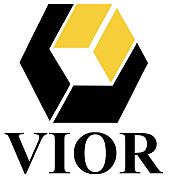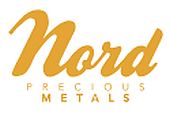 West High Yield talks up magnesium extraction process
West High Yield talks up magnesium extraction process
2017-07-31 09:28 ET – News Release
Mr. Frank Marasco reports
WEST HIGH YIELD PROVIDES UPDATE ON RECOVERY PROCESSES
West High Yield (WHY) Resources Ltd. has presented a brief overview of a microplant test results report dated July 19, 2017, prepared by Drinkard Metalox Inc. of Charlotte, N.C. The Drinkard Report details results using a proprietary, nitric acid leach extraction process on magnesium resource rock from the Company’s Record Ridge South deposit. The products of the process would include magnesium nitrate, nickel hydroxide and high grade magnesium oxide.
Summary
The novel, nitric acid metallurgical process tested was developed/designed by Drinkard with test work conducted in Drinkard’s micro-plant test facilities in North Carolina. Of particular importance are the following results: Mg recoveries >=98.5%; 98-99% recycling of nitric acid leachate; and development of a simplified process flowsheet that can produce either standalone purified magnesium nitrate or a 97% MgO product, with separate nickel and iron products. An anticipated benefit of this novel extraction process will be to potentially lower the cut-off grade for mining, anticipated to increase mineral resources.
While additional pilot plant testing is required, these results indicate a far simpler and more cost effective magnesium processing plant, producing multiple salable products with minimal environmental impact. As the process design is finalized, capital and operating costs associated with the process will be determined by the consulting engineering company.
2013 PEA Report
In June 2013, the Company released a National Instrument 43-101 Preliminary Economic Assessment Technical Report (the “PEA Report”) on the Company’s Record Ridge Project prepared by SRK Consulting (U.S.), Inc., of Lakewood, CO (see the Company’s news release dated June 4, 2013). The PEA Report is available on the Company’s website at www.whyresources.com and on its SEDAR profile at www.sedar.com.
A conclusion of metallurgical test work documented in the PEA Report was that, under the stated leach conditions, Mg recovery of 80% was achievable and that SRK would use an 80% recovery factor for its design criteria (Section 11.2, page 50 of the PEA Report). The extraction process tested used sulphuric acid as a leachate.
The PEA Report recommended further metallurgical test work to include lock cycle and precipitation testing to establish reagent consumption and recovery and particularly, production of sulphuric acid and percentage of sulphuric acid recycling achievable (Section 22.2.2, page 139-140 of the PEA Report). Production of fused magnesia required confirmation testing as well as addressing potential production and sale of large quantities of sodium sulphate.
For the past four years, the Company has pursued metallurgical recommendations in the PEA Report (Section 23, page 143 of the PEA Report) to conduct a complete review of the metallurgical process for extraction of magnesium, products produced by that process, and their marketability, reagent recovery and costs. This was all done with the objective of simplifying the extraction process, optimizing capital and operating costs while minimizing the overall environmental impact.
The Nitric Acid Leach Extraction Process
Drinkard was commissioned by the Company to develop an extraction process using nitric acid to recover magnesium nitrate, nickel hydroxide and a high grade of magnesium oxide as salable products. This novel process allows the recovery of all metals of interest and recovery/recycling of 98-99% of the nitric acid leachate.
The micro plant study presents an extraction process based on a unique principle of using nitric acid to solubilize the Company’s magnesium-bearing resource rock. The next step involves selectively precipitating and removing undesirable impurities (i.e. iron and arsenic) and precipitating and recovering valuable nickel. The purified magnesium nitrate solution is evaporated and decomposed back into pure magnesium oxide which can be sold or used as the precipitant for removing impurities during the extraction process. The magnesium nitrate solution is then decomposed, releasing contained nitrates as nitric acid which is quantitatively recovered and can be reused.
The nitric acid leach extraction process involves a sequential, multi-step, process flow sheet to clean-up/remove the undesirable congeners of nickel and iron. The first, and simplest, process produces a magnesium nitrate product suitable for the fertilizer industry. The second stage process utilizes the magnesium nitrate product of the first stage and includes a decomposition step to recover purified magnesium oxide and extraction of an iron(Fe)/chrome(Cr) or Fe/Cr/Ni product. The third process involves separation of iron and nickel into constituent products. Importantly, these investigations have shown the ability to recycle a high proportion of the nitric acid. The processes are exothermic (heat generating), saving on heating leach solutions to achieve optimum extraction conditions. The principal waste filtrate would be a clean silica residue.
The Drinkard Report indicates that the nitric acid leach extraction process being developed has several notable benefits and advantages over other acid leaches, as follows: Magnesium recovery is increased from 80% (as reported in the PEA Report) to 98.5-99.5% of the acid-leachable magnesium (where the difference between total magnesium (23.855%) and extractable magnesium (22.177%) is 1.678%. This non-leachable magnesium fraction is present in the resource as magnesium silicate which cannot be leached by nitric acid);
the process produces very pure MgO;
98-99% of nitric acid is recycled;
97% of the acid-leachable magnesium is recovered as MgO;
Fe/Cr or Fe/Cr/Ni co-products are suitable for steel production;
90-99% of nickel can be recovered separately, if desired;
plant waste disposal is minimized compared to other leach processes as only silica needs to be disposed; and
capital costs may be lowered as no autoclaves or pyromet furnaces are required (i.e. electrical requirements and attendant costs are significantly less than previously estimated).
Aside from the advantages described above, the approximate 18% increase in magnesium recovery from the raw resource alone adds approximately 90 pounds of Mg per metric tonne of magnesium-bearing mineralization.
While there is further micro-pilot and metallurgical process development required, test work completed to date indicates a significant increase in Mg recovery, together with a reduction in estimated capital and operating costs compared to what was disclosed in the PEA Report.
Other Work
The Company has been actively pursuing environmental baseline studies at the Company’s Record Ridge South project together with a stakeholder engagement plan and mine plan development as required by the Environmental Assessment Certification and Mine Permit application processes. As previously announced, the Company engaged SRK Consulting (Canada) Inc. (Vancouver) and Greenwood Environmental Inc. (Vancouver) to perform these important studies.
About West High Yield
West High Yield is a publicly traded, junior exploration company focused on the acquisition, exploration and development of mineral resource properties in Canada with a primary objective to locate and develop economic gold, nickel and magnesium properties. The Company remains focused on continued development of its 100% owned exploration property at Record Ridge South located approximately 3 km west of the community of Rossland in south-central BC, Canada.
Mr. Rick Walker, P. Geo., of Dynamic Exploration Ltd., is the “qualified person” as defined in National Instrument 43-101, who has reviewed and approved the technical content in this press release.
http://www.whyresources.com/news/






















